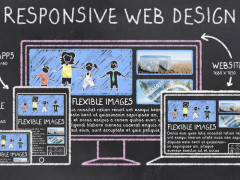If you had to sum up the recurring theme of the last several years in virtually all areas of our lives, “disruption” would be the word you would undoubtedly use.

We have witnessed some significant and thrilling instances of disruption, such as how a community of Reddit users utilized the Robinhood app to revolutionize our perception of stocks. However, the impact of mobile apps on financial markets is merely the tip of the iceberg when it comes to the various forms of disruption that we have encountered.
Another form of disruption that is prominent in ways both large and small takes the form of AI, or artificial intelligence. In just a few short years it’s changed the makeup of the modern office significantly – something that is true in a number of ways that are worth exploring.
The Role of AI in the Ever-Changing World of Work
For decades, managers have existing in an office environment primarily for the purposes of “people management.” They help make sure that team members and other employees are staying on-task, are moving in the right direction, are keeping up with all necessary deliverables, etc.
With AI tools that are already available, all of this can now be automated. An estimation between 40% and 50% of human resources functions are now using many AI-augmented applications to perform these tasks with greater ease and accuracy than ever before. Somehow, this has simultaneously managed to make the human resources department more valuable than ever thanks to the timely and accurate insight that it can generate, while also completely shifting the definition of what employees working within this department are expected to do.
As the world rapidly adopts AI technology, even Zoom has hopped on the bandwagon. In a recent announcement, the video conferencing platform revealed its collaboration with OpenAI, the creators of ChatGPT, to introduce AI-powered features, primarily targeting sales teams, marking a major shift for the company.
The feature, dubbed Zoom IQ for Sales, uses artificial intelligence to digest the massive volumes of data that organizations are already creating to generate an accurate and real-time engagement score for all customers in a system. It is intended to give insight into how “attentive” a customer is based on the amount of time that passes between when they make contact, how long they speak during calls, the number of times they speak when talking to an employee, and more. It also generates a sentiment score that essentially measures how positive or negative their attitude is when they participate in meetings.
In an instance, tasks that formerly took up a significant amount of a sales representative’s day in the office are now handled quickly, easily, and accurately by an AI tool. This in turn frees up as much of their valuable time as possible to focus on matters that truly need their attention.
But how soon will it be before these same AI tools are essentially running our Zoom meetings for us? Suddenly what was once a pivotal collaborative tool during the pandemic becomes yet another opportunity for automation. If that isn’t a perfect example of disruption – and the rapid pace it often arrives with – nothing is.
In the end, it’s truly incredible to think about that which has been made possible thanks to AI in an office environment over a (relatively) short period of time. From the role of automation in allowing employees to work smarter, not harder, to the recent emergence of tools like ChatGPT. When you consider all that artificial intelligence has been able to disrupt in just a few short years, it’s truly amazing to think about what the next few might have in store for us all.





Leave a Reply